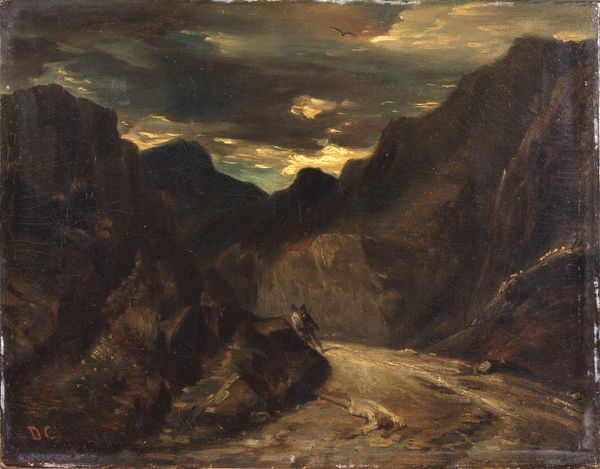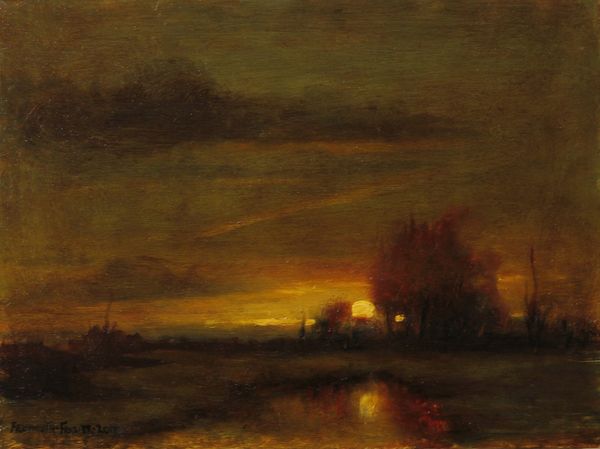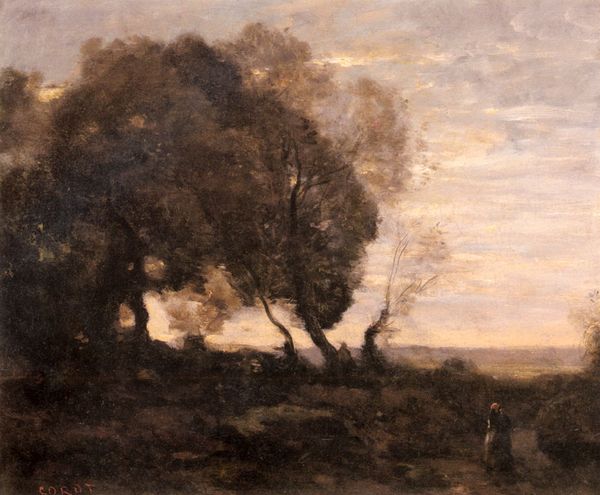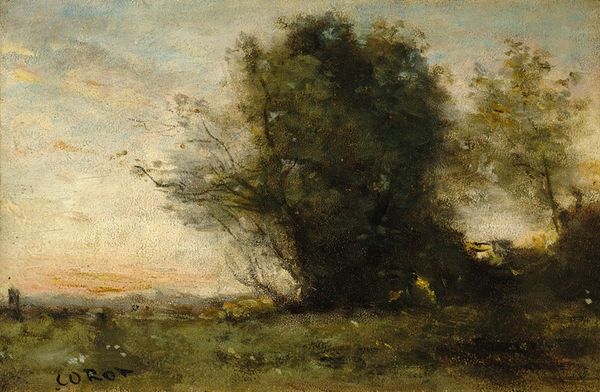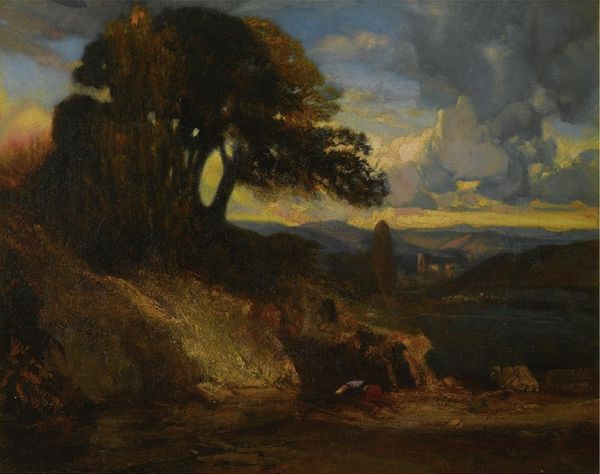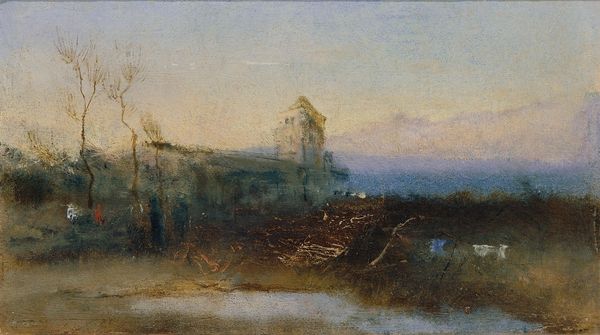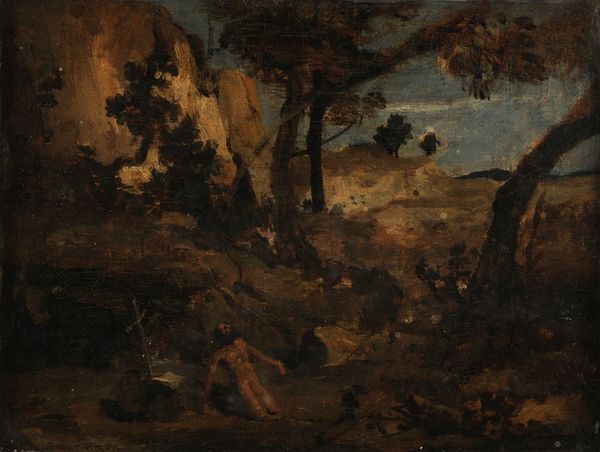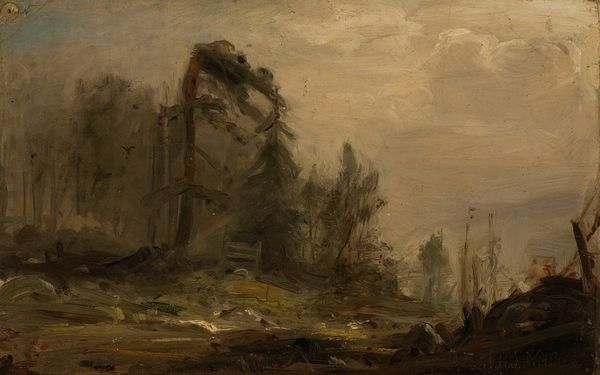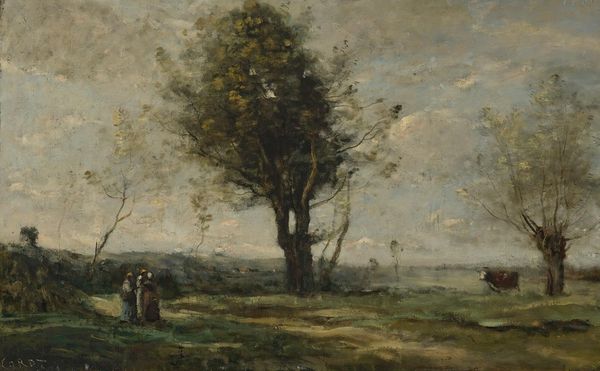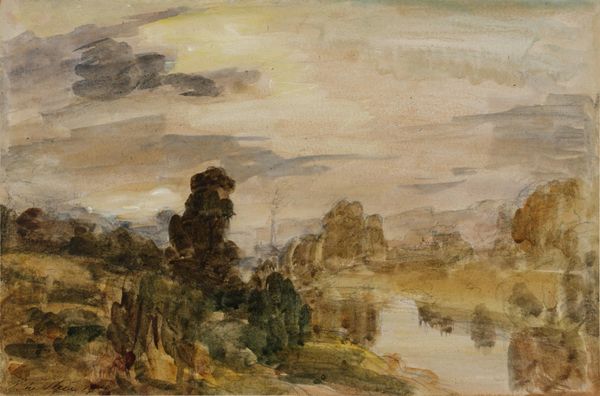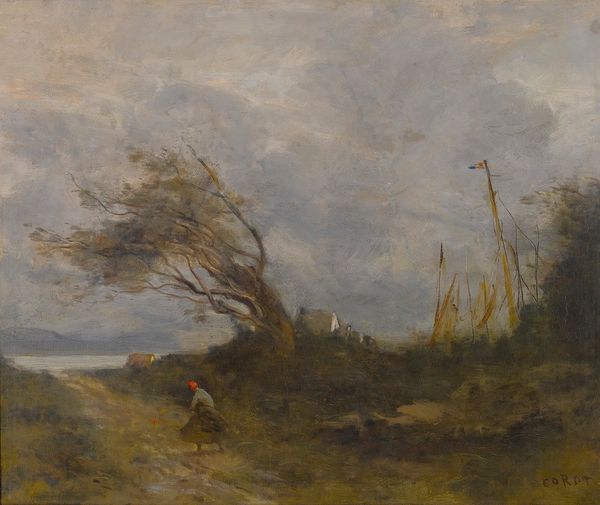
plein-air, oil-paint, impasto
#
plein-air
#
oil-paint
#
landscape
#
oil painting
#
impasto
#
romanticism
Copyright: Public Domain: Artvee
Editor: Today, we’re looking at “Les trois cyprès,” or "The Three Cypresses," an oil painting from around the 19th century by Félix Ziem. I'm struck by how the texture of the paint gives it such a hazy, almost dreamlike quality. What formal elements stand out to you in this landscape? Curator: Immediately, it's the contrast between the verticality of the cypress trees and the horizontality established by the landscape’s planes. Notice how the impasto technique enriches this interplay. It guides our eye through the painting, pausing and accelerating as it moves across the composition. Does the muted palette influence your interpretation? Editor: It does. The subdued earth tones create a sense of stillness and contemplation, but I'm wondering how the relative placement of these elements works within the composition. Is it structured to suggest depth? Curator: Precisely. The artist is deploying a layering effect, moving from a darker foreground, through the trees and buildings, to a blurred, almost washed-out background, generating depth and creating a sense of atmospheric perspective. Note how the density of brushstrokes also lessens as we recede into the distance. Editor: That makes sense. So it’s the relationship between the texture and the colour that produces the overall effect of spatial recession. It really invites you to get lost in the painting. Curator: Yes, the formal construction generates the experiential impact. Through Ziem’s strategic composition, we discover how each formal element plays its role in orchestrating depth. The colour palette unifies, yet also subtly distinguishes each pictorial zone. The application method of oil paint reinforces this contrast and depth through an exercise in material contrasts. Editor: I'm beginning to see how the structural interplay affects the mood and overall meaning much more clearly now. Thank you. Curator: Likewise. This deeper engagement reaffirms how rigorous observation unveils new possibilities for interpreting art’s construction.
Comments
No comments
Be the first to comment and join the conversation on the ultimate creative platform.
